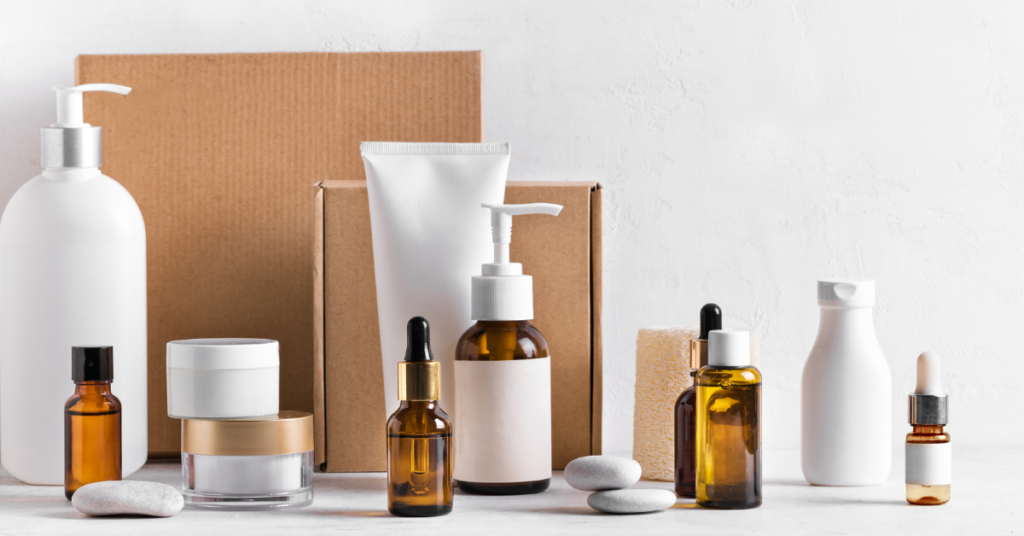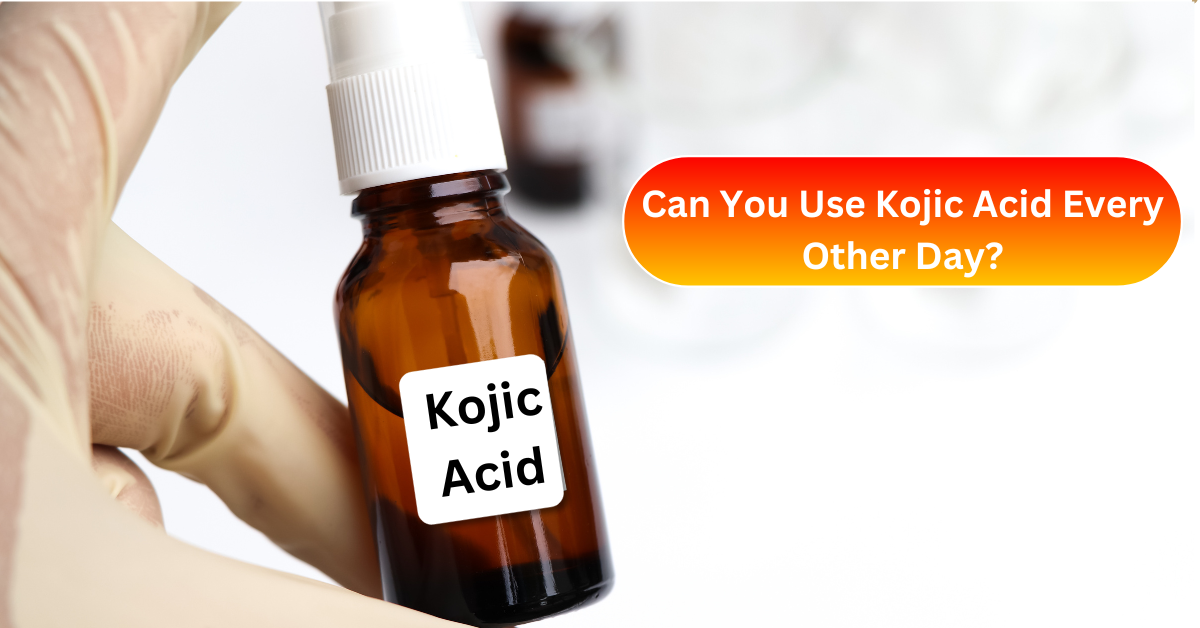In skincare, kojic acid has emerged as one of the most talked-about substances. Frequently found in products like serums, lotions, and soaps, it is well-known for its capacity to reduce dark spots and enhance skin tone. However, Can You Use Kojic Acid Every Other Day? In this article, we’ll explore whether this popular ingredient fits into your skincare routine without causing harm.
Table of Contents
What is Kojic Acid?
Kojic acid is a naturally occurring fungal byproduct that is particularly synthesized during food fermentation, rice wine, sake, and soy sauce. It is used widely as a skin-lightening agent. Kojic acid is used by many individuals as a skin brightener to heal and erase pigmentation marks, sun freckles, and other skin discolorations.
Because of its effectiveness, kojic acid is commonly used in products designed for:
- Treating acne scars.
- Lightening melasma or sun spots.
- Brightening dull skin.
How Kojic Acid Works

The unique way that kojic acid works is that it inhibits the synthesis of melanin. The melanin is the crystal that gives color to the skin, hair, and eyes of a person. Kojic acid is a biochemical that is known to work by preventing the enzyme phenoloxidase commonly known as tyrosinase from synthesizing melanin.
By slowing down melanin production, kojic acid:
- Fades existing dark spots.
- Prevents new pigmentation from forming.
- Makes the skin appear brighter and more even.
This process is gradual and safe for most skin types when used properly.
Can You Use Kojic Acid Every Other Day?
Yes, kojic acid can be used every other day and no strictly has no side effects even if used in the long run. However, to the first-timers or those with delicately sensitive skin, this a good fighting stance to start with. Applying it every other day is good because it helps your skin get used to the lotion and if you use it too often, it will just cause irritation.
Why Every Other Day Works
- Reduced Risk of Irritation: Kojic acid can occasionally cause skin dryness. Applications should be spaced out to allow your skin to heal.
- Steady Results: Over time, kojic acid continues to brighten dark spots even with less regular application.
- Flexibility: kojic acid is best used every other day by those who combine it with other active substances.
If your skin handles kojic acid well, you may eventually increase the frequency. However, starting slow is key to avoiding side effects.
Who Should Be Careful When Using Kojic Acid?
While kojic acid is effective, it’s not suitable for everyone. People with certain skin conditions or sensitivities should use it cautiously.
- Sensitive Skin: As for side effects, kojic acid doesn’t seem to be very invasive and most people get mild irritation if they are first-time users.
- Dry Skin: Due to such properties of kojic acid that it may make the skin dry, everyone with skin problems such as dry skin should apply moisturizer after its application.
- Allergy-Prone Skin: Some people may develop side effects from kojic acid allergy.
Usage of Kojic Acid with Other Skincare Products

Kojic acid can be a powerful addition to your skincare routine, but it’s important to know how it interacts with other products.
Products to Pair with Kojic Acid
- Moisturizers: Because it has the potential to dry the skin, users should apply a moisturizer after using the Kojic Mask.
- Gentle Cleansers: Avoid using strong products with acid and do not overwash your skin, as this will cause problems to your face.
- Sunscreen: Kojic acid may make skin more sensitive to the sunlight, therefore it is imperative to protect your skin from further production of dark spots.
Products to Avoid
- Strong Exfoliants: Kojic acid should not be used with glycolic acid, salicylic acid, or any other form of exfoliating acids since they will worsen skin irritation.
- Retinol: Combining kojic acid with retinol causes redness or even peeling, especially for customers having sensitive skin.
Using kojic acid on alternating days with stronger ingredients is a safe way to balance your routine.
How to Use Kojic Acid Safely
To maximize the benefits of kojic acid and minimize side effects, follow these tips:
- Start Slowly: New users should take kojic acid at least every other day or two times a week at most. Take it steady because your pores and skin need to adapt to the new selenium level.
- Patch Test First: Use a small amount in an area of your skin that is inner wrist and leave it for 24 hours to see any signs of irritation or inflammation.
- Follow Instructions: Always read the product label and use the recommended amount. Overusing kojic acid can irritate the skin.
- Apply Sunscreen Daily: Kojic acid makes your skin more sensitive to UV rays, so sunscreen is non-negotiable.
- Moisturize Well: This hold-up can be treated by making sure you wear a moisturizer that will protect your skin from dryness.
What Happens If You Use Kojic Acid Too Often?
Overusing kojic acid can do more harm than good. If applied too frequently, you may experience:
- Skin Irritation: Every burning, itching, or redness happens.
- Excessive Dryness: Removes the skin’s natural oils or moisturizers.
- Increased Sensitivity: The skin surface of individuals becomes susceptible to sunburn.
- Uneven Skin Texture: If used frequently it causes peeling or flaking of the skin.
- Allergic Reactions: This can bring about skin rash or irritation.
Using kojic acid every other day strikes a balance between effectiveness and safety.
How Long Does Kojic Acid Take to Show Results?
| Time Frame | Expected Results |
| Week 1–2 | Minimal changes; skin may feel smoother. |
| Week 2–3 | Early signs of a brighter complexion; dark spots may begin to fade slightly. |
| Week 4–6 | Noticeable fading of pigmentation; skin tone appears more even. |
| Week 6–8+ | Significant reduction in dark spots and hyperpigmentation with consistent use. |
| Beyond 8 Weeks | Stubborn spots may show gradual improvement; results depend on skin type. |
Benefits of Using Kojic Acid Every Other Day

Using kojic acid every other day offers several benefits:
- Prevents Overuse: Prevents skin irritation and skin dryness.
- Gives Skin Time to Heal: This enables your skin to heal in case this product is used too frequently on the skin.
- Sustainable Routine: It makes it simpler to keep up with a schedule without overloading your skin.
- Improves Effectiveness: Consistent yet interval application guarantees Kojic acid has its effectiveness without the friction on the skin.
Alternatives If Kojic Acid Doesn’t Work for You
If kojic acid isn’t suitable for your skin, here are some gentle alternatives:
- Niacinamide: All skin types can safely use niacinamide, which brightens skin and minimizes dark spots.
- Vitamin C: A naturally occurring antioxidant that prevents damage from free radicals and balances out skin tone.
- Licorice Root Extract: Reduces pigmentation and soothes the skin.
- Azelaic Acid: Without being irritating, azelaic acid helps with acne and hyperpigmentation.
These ingredients can be used alone or as a combination skincare routine.
Conclusion
Kojic acid is a powerful yet gentle skincare ingredient that can help brighten your complexion and fade dark spots. You can reap its benefits without overtaxing your skin by using it every other day. Always moisturize, apply sunscreen, and patch-test your skin.
To identify the optimum method for your skin type, speak with a dermatologist if you’re not sure whether to use kojic acid. To achieve healthier, more radiant skin, kojic acid can be a useful component of your skincare routine with time and appropriate maintenance.
More Interesting: The Ultimate Guide: Can I Use Niacinamide with Benzoyl Peroxide?
FAQS
What happens when you stop using kojic acid?
The effects of kojic acid rapidly diminish when you stop using it. If not maintained, pigmentation and dark patches could reappear.
Can kojic acid worsen hyperpigmentation?
Overuse of kojic acid can exacerbate hyperpigmentation. Overuse could cause skin irritation and increase pigmentation.
Does kojic acid work permanently?
No, the effects of kojic acid are temporary. To sustain its skin-lightening benefits, regular application is required.
Does kojic acid make skin darker?
No, skin does not become darker due to kojic acid. However, UV exposure can result in darkening if sunscreen is used incorrectly or is skipped.

